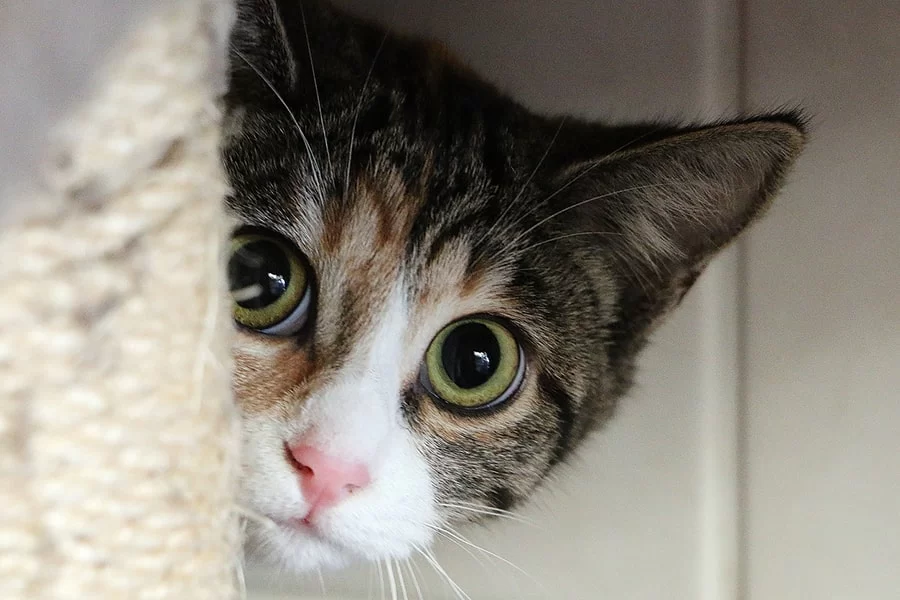- Understanding Shy Cat Behavior and Why Socialization Matters
- Step-by-Step Process to Socialize a Shy Cat
- Real-Life Stories and Examples of Successful Cat Socialization
- Professional Advice and Where to Find Support
Understanding Shy Cat Behavior and Why Socialization Matters
Shy cats, often characterized by their tendency to hide or avoid new people and environments, present a unique challenge for pet owners who want to help them feel comfortable and safe. Understanding the roots of this timidity is the first step toward effective socialization. Many cats develop shy behaviors due to early life experiences, genetic predispositions, or past trauma. This cautious nature isn’t a flaw but a survival strategy that has helped them navigate unfamiliar or threatening situations.
Socializing a shy cat is essential because it not only improves their quality of life but also strengthens the bond between the cat and their human family. A well-socialized cat is more relaxed, less anxious, and better able to handle changes in their environment. The process requires patience and respect for the cat’s boundaries, making it a gradual journey rather than a quick fix.
Why Shy Cats Need a Gentle Approach
Rushing the socialization process can backfire, increasing fear and mistrust. Shy cats respond best to calm environments and positive reinforcement rather than force or loud noises. Recognizing the signs of stress—such as flattened ears, dilated pupils, or tail twitching—helps caregivers adjust their approach and create a safe space where the cat feels in control.
By appreciating these behaviors, owners can create tailored socialization plans that promote confidence and reduce anxiety over time.
Step-by-Step Process to Socialize a Shy Cat
Socializing a shy cat involves a series of carefully planned steps designed to gradually build trust and comfort. The process should be flexible, adapting to the individual cat’s pace and reactions.
1. Create a Safe and Quiet Space
Start by providing a secluded area where the cat can retreat without disturbance. This space should have essentials like food, water, a litter box, and comfortable bedding. The goal is to establish a sanctuary where the cat feels secure, reducing overall anxiety.
2. Establish a Routine
Cats thrive on predictability. Feeding, playtime, and quiet interaction should occur consistently around the same times each day. This routine helps the shy cat anticipate positive experiences and feel more in control.
3. Use Positive Reinforcement
Treats, gentle petting (if the cat allows), and soft verbal praise encourage approach behaviors. Avoid punishment or any form of negative reinforcement, as these can worsen fear and inhibit progress.
4. Gradual Exposure to New Stimuli
Slowly introduce the cat to new people, sounds, and environments. For instance, begin with one visitor sitting quietly at a distance and gradually decrease the space as the cat becomes more comfortable. Using toys or treats can help distract and engage the cat during these interactions.
5. Interactive Play and Engagement
Play is a powerful tool to reduce fear. Wand toys or laser pointers invite shy cats to participate actively and redirect nervous energy into positive outlets.
6. Patience and Observation
Every cat is unique. Monitoring reactions closely allows owners to know when to slow down or try different techniques. Remember, socialization is a marathon, not a sprint.
Real-Life Stories and Examples of Successful Cat Socialization
Consider the story of Luna, a cat rescued from a shelter where she was notably withdrawn and fearful of human contact. Her new owners began by letting Luna explore a quiet room without pressure, offering treats and talking softly. Over months, Luna gradually approached visitors and even learned to sit on laps. This progress wasn’t overnight but was a rewarding example of what gentle persistence can achieve.
Similarly, a popular viral story features a shy cat named Oliver, whose owners documented his journey from hiding behind furniture to happily joining family dinners. Their key strategy was respecting Oliver’s pace and rewarding small steps, proving that socializing shy cats requires empathy and dedication.
Lessons from These Experiences
Both cases highlight the importance of a tailored, compassionate approach. They remind us that shy cats often carry emotional histories that influence their behavior and that patience combined with consistency can transform their world.
Professional Advice and Where to Find Support
For cat owners who want expert guidance, consulting veterinarians or feline behaviorists can be invaluable. These professionals can offer personalized socialization plans and identify any underlying medical or psychological issues contributing to shyness.
At Hidden Brook Veterinary, experienced staff understand the nuances of timid feline behavior and offer products, training advice, and even behavioral consultations designed to help shy cats flourish. From calming pheromone diffusers to specialized interactive toys, their recommendations align with proven socialization methods.
Furthermore, many veterinary clinics and animal behavior centers host socialization workshops or support groups, creating community spaces where owners can share experiences and learn new strategies.
Why Professional Support Matters
Not all shy cats respond the same way to socialization efforts. Professional input ensures that socialization is safe, effective, and adapted to your cat’s individual needs. It also offers reassurance to owners, making the process less daunting.










